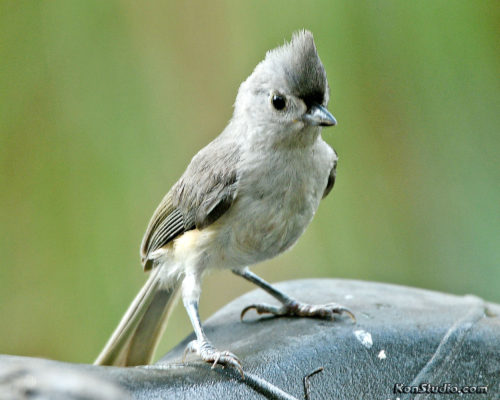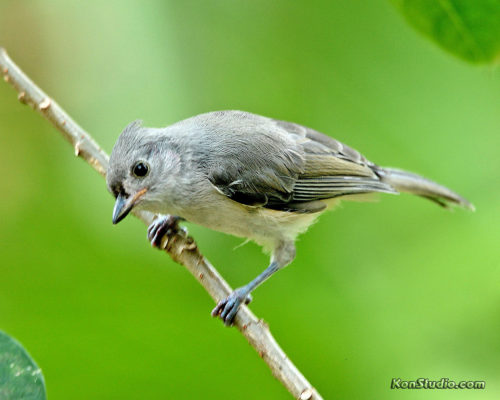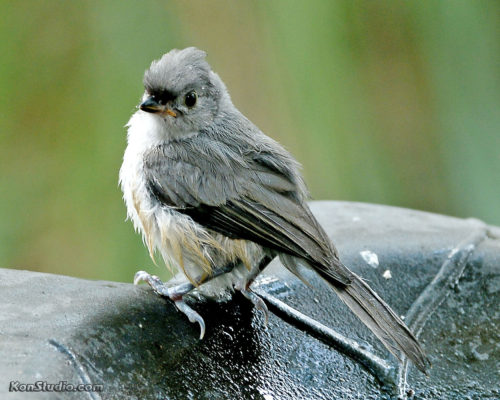The Tufted Titmouse (Baeolophus bicolor) is common in eastern deciduous forests and is a frequent visitor to feeders. They have a large head with large black eyes, thick necks, and a full compact body. They have a distinctly pointed crest and stout bill with a black patch above. Measuring about 5.5-6.3 inches with a wingspan of about 7.9-10.2 inches, they weigh about 0.6-0.9 oz. Plumage is a soft silvery gray coloration from above and a white color below, with a rusty or peach-colored wash down the flanks.
This passerine bird eats mainly insects in the summer which include caterpillars, beetles, and ants, though they also feed on seeds, nuts, and berries, including nuts and beech nuts. In fall and winter, they will hoard their shelled seeds in bark crevices. As acrobatic foragers, they often hang upside down or sideways while investigating cones, undersides of branches, and leaf clusters. They are very vocal birds and are quick to respond to the sounds of agitation in other birds, either going to investigate or joining a group of birds that are mobbing a predator.
The Tufted Titmouse nests in cavities from natural holes or old nest holes made by several woodpecker species and will also nest in artificial structures such as nest boxes, fenceposts, and metal pipes. Damp leaves, moss and grasses, and bark strips are used to create their nests. The nest is lined with soft material such as hair, fur, wool, cotton, and even sometimes plucked hairs from living mammals. Nest construction takes about 6 to 11 days. Three to nine eggs are laid in a clutch, incubation is about 12 to 14 days, and the young can leave the nest at about 15 to 16 days.
Their population is common and even increasing which makes this little bird a low conservation concern. The Tufted Titmice have gained popularity as a backyard feeder bird.



